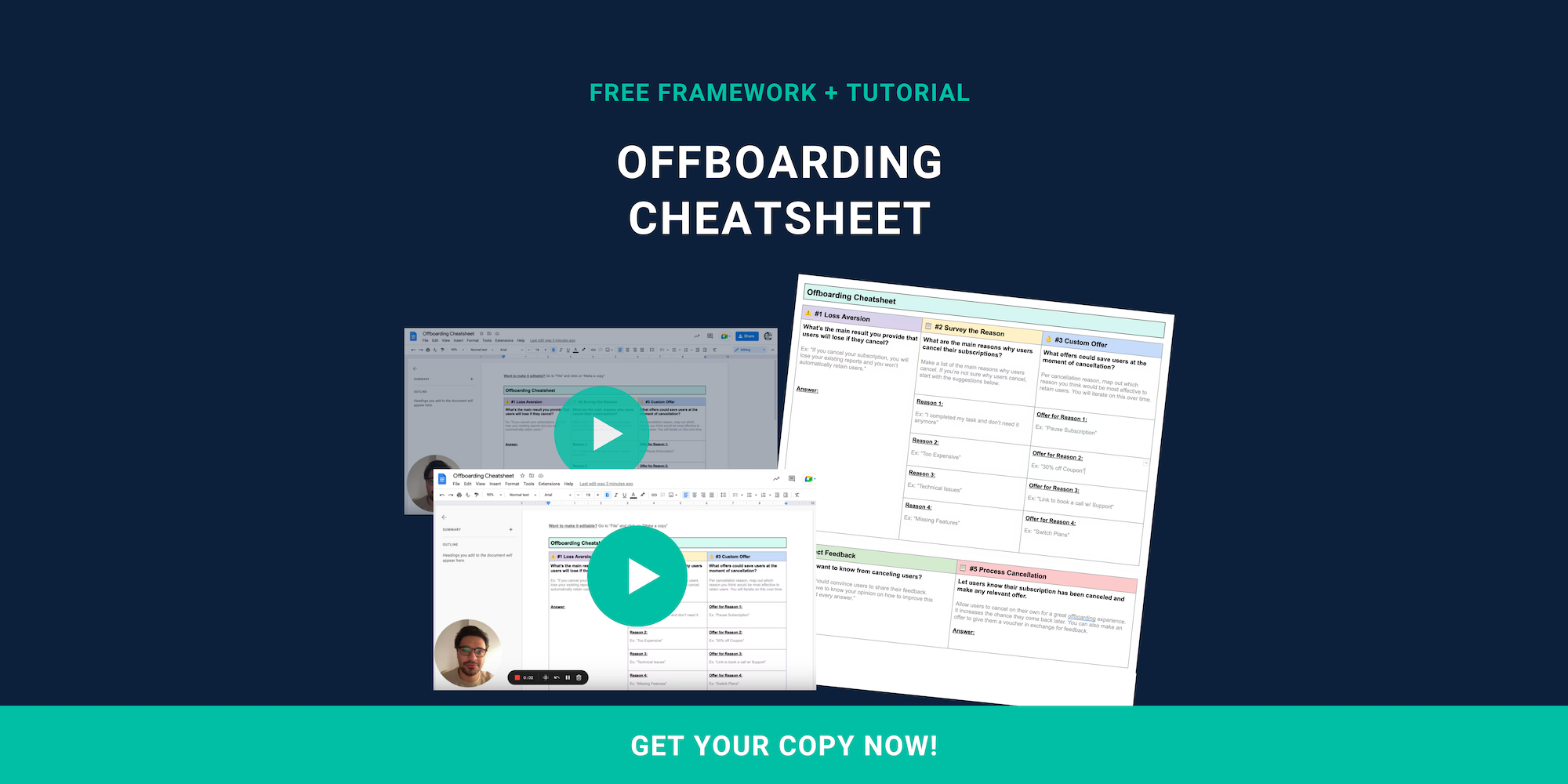As you track key SaaS metrics, are you using the customer lifetime value formula?
Customer lifetime value (CLV) is a SaaS metric for how much revenue a typical customer will bring in during their relationship with your company.
For a SaaS business, CLV represents a user’s value to your business over a period of time.
Straight off the bat, here are a few key points:
- Lifetime value is the lifeblood of your SaaS business.
- There are different ways to calculate lifetime value.
- Lifetime value and churn rate are closely aligned.
Venture capitalists and investors see CLV as the best metric for company valuation.
If you’re committed to building an asset that’s attractive to investors, maximizing customer lifetime value must be at the forefront of your decision-making as a SaaS founder.
Despite its importance, many SaaS founders overlook the importance of CLV.
Growth is not convoluted or magical. It’s very simple: Measure. Test. Experiment. Create a culture of experimentation and celebrate failure as much as you celebrate success.
– Chamath Palihapitiya
What is the customer lifetime value formula?
Customer Lifetime Value
Customer Lifetime Value = Customer Value * Average Customer Lifespan
Customer Value
Customer Value = Average Purchase Value * Average Purchase Frequency Rate
Average Purchase Value
Average Purchase Value = Total Revenue / Number Of Orders
Average Purchase Frequency Rate
Average Purchase Frequency Rate = Number Of Purchases / Number Of Customers
Average Customer Lifespan
Average Customer Lifespan = Sum Of Customer Lifespans / Number Of Customers
Why should you use the customer lifetime value formula?
Here are just a few reasons why you should be using the customer lifetime value formula:
- Reliable business viability measure. High customer lifetime value is a clear sign of strong product-market fit and brand loyalty. The metric gives you a sense of how well your SaaS resonates with users and helps you to predict future growth.
- CLV can help you to assess the profitability of your customer acquisition spending. While customer acquisition costs may exceed the value of the customer’s first purchase - they could make you more money over time. Calculating CLV will help to inform the amount of money you’re prepared to allocate towards customer acquisition.
- Optimize growth. When you are utilizing a broad range of SaaS metrics to track your growth, you can make informed decisions to improve your growth trajectory.
When you’re evaluating your product-market fit, CLV will tell you whether you’re effectively meeting the needs of your target market.
If you have a high CLV, this is a very clear sign that you’re experiencing high customer retention - as the SaaS customers are continuing with their subscriptions.
High customer retention can only be achieved through strong product-market fit.
What is a good customer lifetime value?
In most cases, your customer lifetime value should be at least three times greater than your customer acquisition cost.
If you’re spending $100 on marketing and sales efforts to acquire a new customer, this customer should have a lifetime value of at least $300.
It all comes down to how much you’re investing to acquire customers in relation to what you will receive in return.
LTV / CAC Ratio
LTV/CAC Ratio = (Revenue Per Customer - Direct Expenses Per Customer) / (1 – Customer Retention Rate) / (Number Of Customers Acquired / Direct Marketing Spending)
What is the average churn rate for SaaS?
The average churn rate for SaaS is anywhere between 3-8%. This is what you should be aiming for.
Ideally, you don’t want to have any customers choosing to cancel their subscription - but it does happen.
To effectively prepare for customer churn, you need to decide what an acceptable rate of churn looks like for your SaaS company and aim to keep churn below this figure.
While it’s inevitable that some users will call it a day and unsubscribe, you must do everything you can to keep your SaaS churn rate low.
A high customer churn rate will be reflected in other SaaS metrics, such as customer lifetime value. If you can boost customer retention and get your churn rate under control, this will positively impact on your metrics across the board.
How do you retain SaaS customers?
If you’re struggling with high customer churn, here are some tips to get you back on track:
- Take a step back and reevaluate your product-market fit.
- Consider whether you’re successfully solving a problem faced by users.
- Ensure your onboarding process sets users off on the right track.
- Develop comprehensive resources to support customer activation.
- Provide users with incentives to stay on, such as access to new features.
- Consistently strive to improve customer service and support.
How can customer feedback improve customer lifetime value?
If you’re trying to reduce churn, you should be leveraging a solution for collecting customer feedback.
Raaft can help you to collect feedback and save customers with retention flows.
At critical moments in the customer journey, Raaft can be automatically deployed to provide your customers with the information they need to unlock value from your SaaS.
Many SaaS founders see Raaft as their safety net.
They know Raaft will automatically extend offers to customers in their retention flow.
Raaft also provides founders with cancellation insights that makes it easy for customers to tell them why they’re deciding to leave. This data can prove to be invaluable for founders that are committed to making data-driven decisions.
To boost customer retention, you need to get the right systems in place to prevent churn and drive customer retention. Try Raaft for free today.

Offboarding Cheatsheet
This framework + video tutorial will help you design a better cancellation process.
Some of our featured articles

Adam Crookes

Adam Crookes

Adam Crookes
Customer Success insights in your inbox
Helping Founders and Customer Success Managers handle customer retention effectively.
We will only ever send you relevant content. Unsubscribe anytime.


